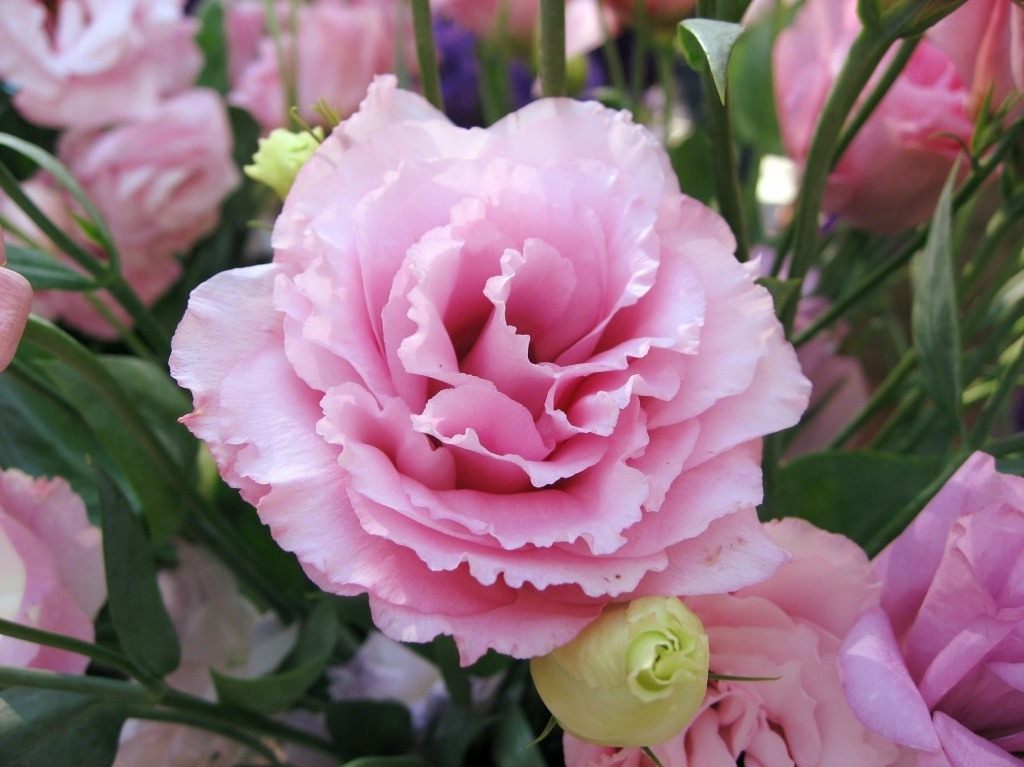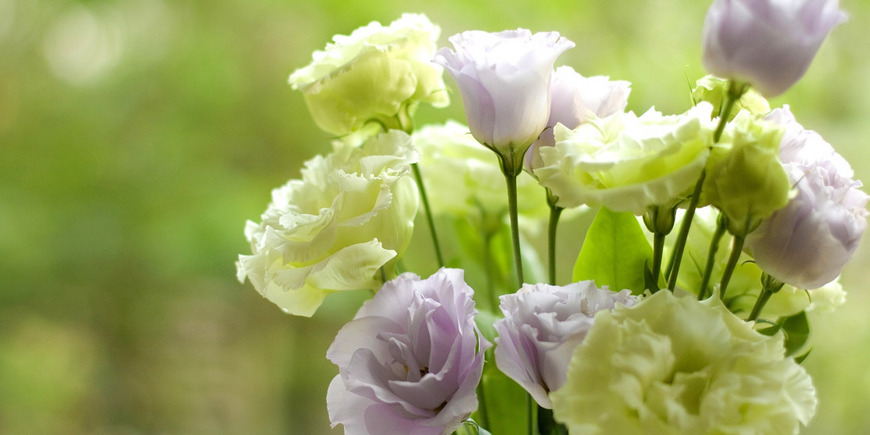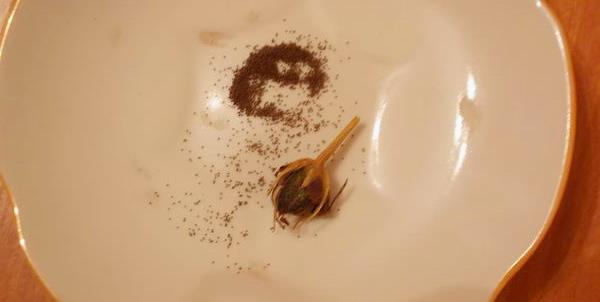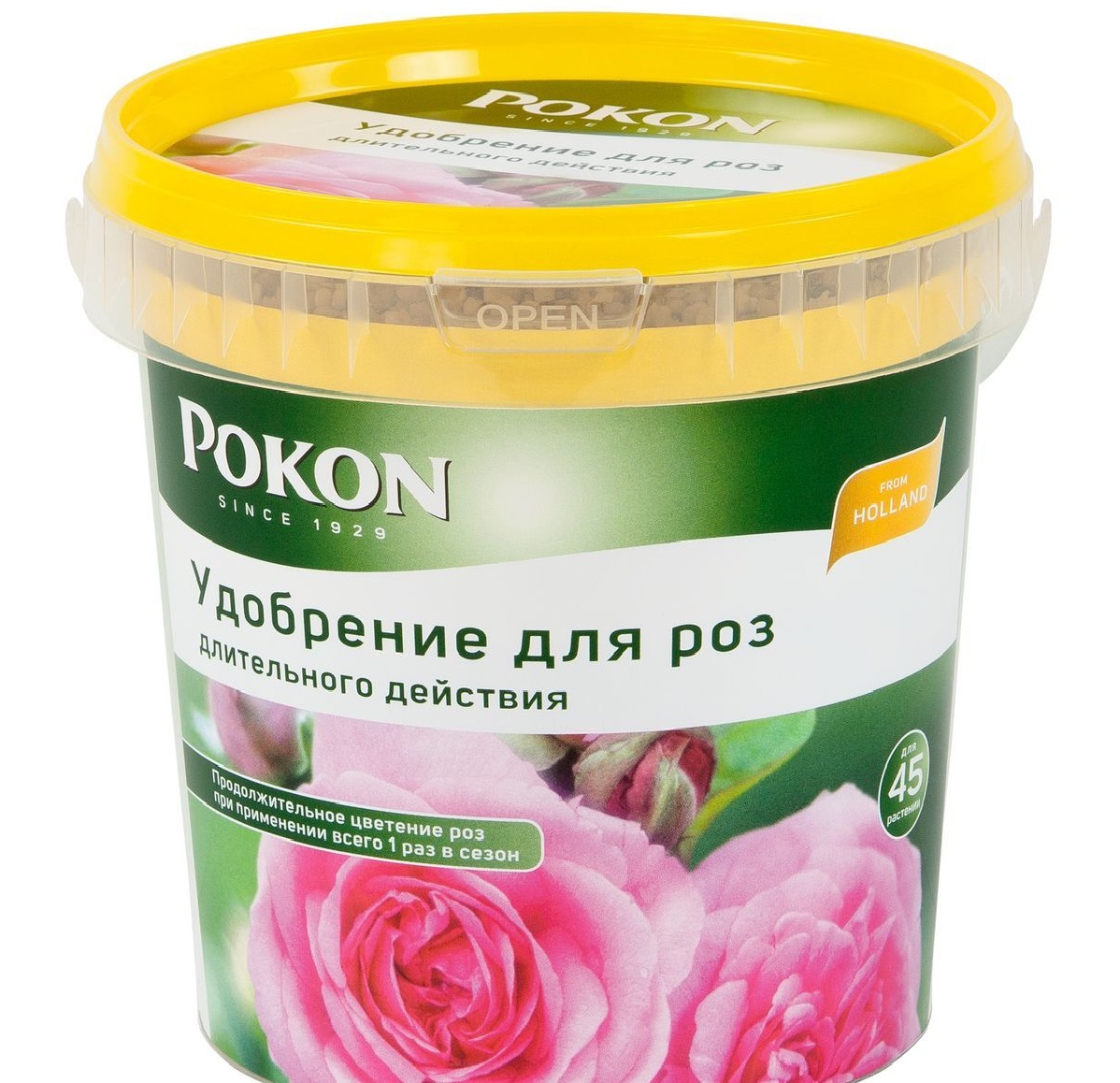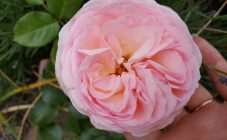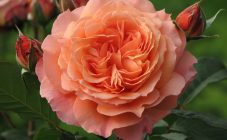Content:
Irish rose (eustoma, eustoma, less often - eustonia) is one of the brightest plants that exist on the planet. It has an amazing color. Most often, the plant is grown at home and stands out favorably among other home flowers. Belongs to the Gorechavkovs. Eustoma is a flower that looks like a rose, only without thorns. Translated from the Latin language literally means: "beautiful mouth", or "beautifully speaking." The second name of the plant is "Texas bell". It is also called lisianthus, or herbal rose. The plant has a bitter herbal flavor. It was once used for medicinal purposes.
A bit of history
The herbaceous rose was discovered by Irish historian, botanist and physician Patrick Brown in the 18th century. Perennial eustoma became widespread first in European countries, later, in the 19th century, flowers began to be grown in Russia as an ornamental home plant.
Great advances in flower cultivation were made in Japan in the 20th century. Half a century later, irish rose has achieved popularity and has surpassed many other flower cultures. Common plant locations are New Zealand, USA, Australia. As you can see, not Ireland, as the name suggests.
There is a beautiful legend associated with the appearance of a flower: a beautiful young girl did not agree to the proposal of the spirit of war to become his wife. This was the reason for her death. Grass grew on the grave and here the Irish rose first appeared.
Description of the plant
The Irish rose eustoma is a perennial plant. Most growers use it as an annual. Due to its unusual appearance, it has attracted the attention of many florists who use the plant to create unusual compositions.
Many species of lisianthus have been created. A flower that looks like an eustoma rose can be found quite often. So, for example, among them is the Scottish rose. Each of them is good in its own way and requires different care. Basically, the culture is not demanding to care for.
The small flowers of perennial eustoma look like rosebuds that have not yet opened. They reach only 5 cm in diameter. The color scheme is varied: both monochromatic flowers and two-colored. The bicolor buds are especially mysterious. The texture is usual smooth and velvety terry. The petals look thin and delicate, like silk. They have a stone shade. The stem of the Irish rose is graceful and slender. Despite this, it can withstand many flowers located on it. Most often, the flowers bloom in a specific sequence, one after the other. Sometimes they can open together, as one complete bouquet. Irish rose leaves are oval shaped. They have a blue-green waxy coating. Breeders have gone far in creating new types of Irish roses. They easily bring out more and more new samples, the height of which reaches a meter. An exception to the rule is varieties of domestic plants. Their height is about 30 cm. Some flowers have an amazing aroma.
Growing, features
Irish rose is a plant that prefers diffused light.The most suitable soil is humus with peat, mixed in the same proportion.
A feature of the plant is that reproduction occurs exclusively by seeds. Watering is allowed only when the soil is dry enough (2 cm deep into the soil).
Better to give it up altogether. The root system is fragile, prone to damage. The optimal condition for keeping is a cool room with free air passage.
Bred varieties and hybrids
To date, more than 60 varieties of Irish roses have already been bred. All of them are divided into small ones in stature - short and tall. The first is used for keeping at home, the second - in an open area, in a garden. In either case, eustonia looks great, perennial flowers are a worthy decoration of the space. In texture, flowers can be either double or ordinary. Coloring in the most unimaginable shades.
Garden eustoma - varieties: Aurora, Echo, Heidi, Flamenko and others.
Indoor varieties: Mermaid, Little bell, Florida pink, etc.
Previously, only professionals were involved in cultivation. Now it is within the power of an amateur florist.
Irish Rose from Seed
To grow eustoma at home, you need to be patient and spend a lot of time and effort. Here it is important to master all the subtleties of the growing process, care. If you take it seriously, responsibly, the result can be simply amazing, exceeding all expectations. Since the plant is becoming more and more in demand among florists and florists every year, this may well become a profitable business. The difficulty in sowing is the small size of the seeds. 23 thousand pieces are only 1 gram.
The planting scheme is as follows: seeds should be sown in late winter - early spring. The soil needs sterile, fertilized with some nitrogen. It is necessary to pour the seeds onto a plate, cover them with glass on top so that fresh air flows to them. You need to use artificial lighting so that the daylight hours are 10-12 hours. The temperature should be around 20 degrees. 60 days you can not water the future plant. The first shoots are visible after a couple of weeks. It is worth removing the glass and spraying them with a phytosporin solution. Transplanted into a larger container only when leaves appear. After three months, the plants are transferred to open soil.
Irish rose in the apartment
The house is a great place to grow a plant. If you want to see flowering in winter, you need to sow seeds in advance - in summer. You need a large container filled with soil. Soil composition: sand and peat, in equal proportions. It is enough to sprinkle the seeds on the surface and cover with foil or glass. It is necessary to provide a sufficient amount of light, as well as - the optimal temperature - 20 degrees. If necessary, spray the seeds. After 21 days, the result of seed care should appear.
It is necessary to plant in separate containers when the first green leaves appear.
Plant care
After planting the plants in pots, they should be properly cared for. First of all, a sufficient amount of sunlight, you can also use artificial. The room must be ventilated, without drafts. Watering is carried out only with soft, settled water. In watering, it is required to observe the measure: to prevent drying out and waterlogging of the soil. If the soil is too wet, the root can start to rot and the plant will die. No need to spray. During flowering, fertilizer must be applied in a timely manner.
After flowering
The indoor rose must be cut off after flowering, leaving two or three internodes. In this state, the plant requires rest. Indoor temperature +15 degrees. Watering is minimal, no fertilization is needed.When shoots appear, transplant into a new land.
When the garden eustoma has faded, it can be transplanted into a pot by placing it on the balcony or in the apartment. He also needs a period of rest. Caring for a garden plant at home is the same as for a room one.
Major diseases and pests of culture, control measures
The plant is susceptible to fungal infections. With high humidity in the summer, it is worth treating the eustoma with fungicides as a preventive measure. Powdery mildew is also a common disease. It looks like a white bloom on the leaves, shoots. It occurs at low temperatures and high humidity. To cope with it, it is worth spraying the plant with Sarolem, Topsin. In total - two or three treatments.
Fusarium wilting is a dangerous disease for eustoma. If present, the stem softens and wilting begins. It can begin if the soil under the flower is dry for a long time.
Among the pests there may be snails, aphids, slugs. To eliminate them, the plant must simply be treated with Fitoverm, Mospilan, Confidor.
Eustoma is a beautiful plant that requires careful care. It will not be difficult for experienced flower growers to grow it at home, as well as in a garden.
